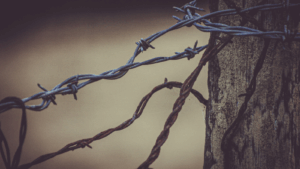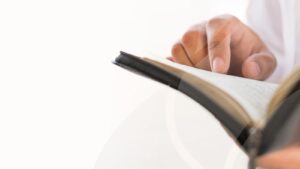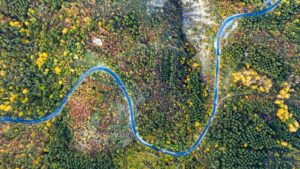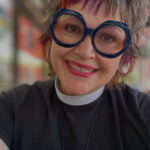The Pandemic. It’s been chaotic, destructive, and disorienting. The overwhelming sense of dread and concern, if not outright fear, has been a heavy and heartbreaking burden for all of us, but even more so for those of us (including myself) who have also experienced the death of loved ones and people we care for. So, it may surprise people that it was also a reprieve for some of us.
In 2011, I was diagnosed with a rare immunodeficiency called Common Variable Immunodeficiency or CVID (no “o”). One of the 400+ Primary Immunodeficiencies, CVID happens when the human body fails to protect itself by shutting off the ability to make antibodies. I am easily susceptible to infections often with more severe sickness. Weekly infusions supplement my immune response, but I still run substantive risk of illness and disease, experiencing significant illness 2 to 3 times a year.
In March 2020, everything shuttered. Suddenly everyone experienced my frailty. Hypervigilance was on most people’s mind. We all experienced the same vulnerability and did our best to keep everyone as safe as possible. Those of us susceptible to sickness were no longer outside watching the world but were in the same “abnormal” experience with everyone. And for two years, I wasn’t sick once!
The Injury of Social Exclusion
I am convinced that people affected by disability do not primarily suffer with physical pain or struggles, but from social exclusion and marginalization. ThomasOne of the twelve disciples of Jesus who is remembered for doubting then believing in the resurrection. More Reynolds, in Vulnerable Communion, discusses our society’s preoccupation with “normalcy” and “body capital.” We create a social concept of “normal” that often skews toward the “supers” (supermodels and superstars). The degree to which a person can approximate this “normalcy”, they are rewarded since they bodily offer value to society (body capital). However, people who cannot approximate “normal” or are obviously not within the parameters of society’s standards for normal–because of physical traits and limitations or because of mental/emotional differences–are marginalized or excluded. This exclusion also happens to varying degrees. For instance, because my condition is hidden, I might be welcomed more easily than someone in a wheelchair or with Cerebral Palsy, Downs Syndrome, or who is on the spectrum.
Humans created for community as Imago Dei (in the Image of the Triune God who lives in perfect community) experience this social exclusion and marginalization as a tremendous injury to our identity and our sense of worth and purpose. And it is a form of blindness to all people’s true condition as broken creatures in a fallen world (2 Corinthians 4:1-4). Beautifully, our earthen vessels contain great treasure within (2 Corinthians 4:5-10). Thus, our calling as followers of Christ is to be ambassadors of the ministry of reconciliation even as we live in broken bodies (2 Corinthians 5:1-5, 16-21).
Our Own Need
While I think this is a compelling reason to include people affected by disability, there is another that I think ought to provoke us to welcome the excluded: our own need.
The wonderfully awful story in 2 Kings 7 illustrates this well. During the Aramean siege of Samaria during the prophet Elisha’s ministry, the situation in the city is dire according to 2 Kings 6. Horrible. And disturbing. In his anger, the King of Israel blames ElishaMiracle working prophet who succeeded Elijah. More for their situation and attempts to have Elisha executed. At the start of chapter 7, Elisha makes a promise that the situation will reverse quickly and soon. Of course, there is disbelief by the King and his officials.
The scene shifts to outside the wall at the entrance of the gateGates are openings in walls or fences for entrance and departure. In the Bible (as in Ruth and the prophets) the city gate was a commercial center where business and social transactions took place. In Amos the gate is the location of the law court... More (keep this in mind that this is outside the walls during a siege). Four men with leprosy are assessing their situation and debating what to do. If they enter the city, they will likely die of famine. If they go to the Arameans and surrender, they could be killed, but they might be spared. So, they choose to go to the Arameans.
As the four men journey, in the early twilight of the day the Arameans are thrown into chaos as God makes them think they hear chariots and horses descending on their position. The Arameans escape leaving behind their supplies and stripping off any armor, weapons, or clothing that slows them down. By the time the four men with leprosy arrive, the camp is empty and there is this humorous scene where they move from tent to tent looking for someone to surrender to, but instead find only feasts and treasure.
Then the critical moment arrives. As the four men sat feasting—men who were excluded from the city’s protection during a siege, who were perceived to have no value worth saving (for example, body capital), and who were expendable to those in power—they began to recognize what God had done and how it was a day of “good news” since God had delivered the Israelites. They committed to returning to the city quickly believing that they had been commissioned to share this good news and that God would hold them accountable for delaying.
Here is the point: those we exclude, those who we might think offer nothing to us because they lack “normalcy” or “body capital” might be the very ones we need in our most distressing moments. They might be the very one’s through whom God tells us “Good News!”
Your Turn
When we view the world through an exclusive societal standard of “normal,” we all lose. However, in architecture and education, universal design is the idea that by making buildings or curriculum accessible to persons with “limitations” or different gifts and talents than we deem “normal”, we make them accessible to all and everyone benefits. What could universal design look like in church life? Here are three ways to move toward including everyone.
First, pray for opened eyes. In 2 Kings 6:17, Elisha prays for God to open his servant’s eyes to God’s provision. We need to do the same. Ask God to open your eyes to those you might not have seen in normal circumstances.
Second, ask good questions. As we emerge from the pandemic, remember the feelings of isolation and concern you experienced, then recognize that for some that is our normal. But that “normal” is partially a design flaw of how we do church and community. Some important questions to consider: What kind of worship, Bible study, fellowship, mission’s endeavor, or community care would we need to develop so that all of us are included? What would need to change in our buildings and facilities so that all could participate? And, how might we better experience the risen yet scarred Savior together, learning the Good News of God from one another because everyone is welcomed?
Third, ask for help. Churches and faith communities can find partners to help them see what they might miss and to think about how to try new options. One international group with regional chapters throughout the US is Joni & Friends. They serve all size churches in rural and urban contexts and support ministry assessment and planning to integrate persons affected by disability. Many denominations also have resources. And there are often local organizations in many cities that can help as well.
God, grant us eyes to see the beauty in one another and to become a welcoming community for all.






